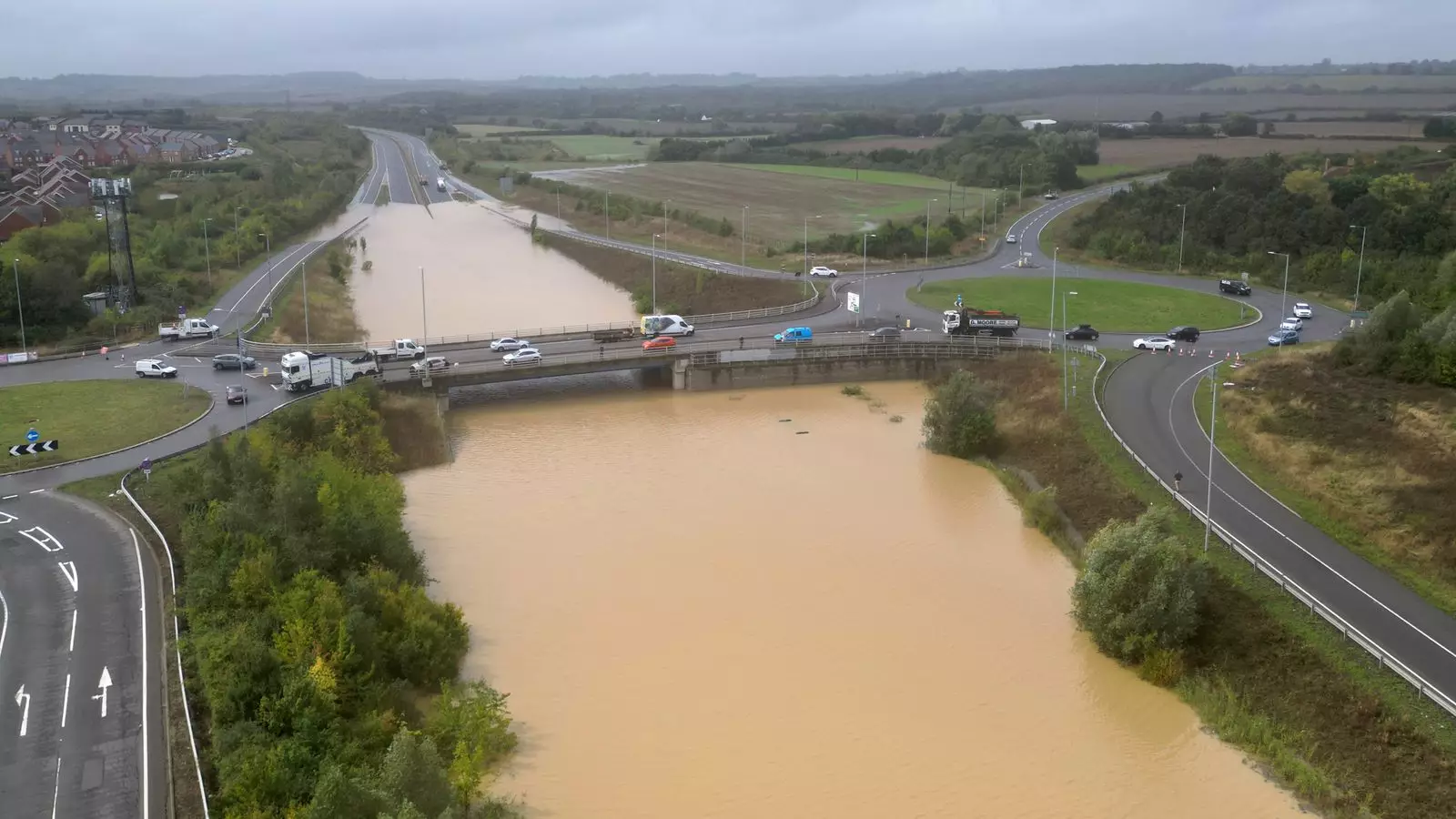Recent adverse weather events have created significant disruptions across various regions of England, leading to pervasive road closures and interruptions in rail services. With numerous flood warnings currently active, the urgency of the situation is felt acutely by commuters who are grappling with an inundation of rain that has yielded its weight in day-long deluges. The unexpected rainfall in recent days has resulted in some areas receiving more than a month’s worth of precipitation within a mere 24-hour timeframe. This is not merely a passing inconvenience; flooding poses real threats to homes, infrastructure, and daily activities.
As the Met Office recently warned, the impact of persistent rain is becoming increasingly critical. Predictions indicate that areas stretching from Nottinghamshire to Northumberland will confront heavy downpour throughout Thursday. A specific caution has been raised regarding the Pennines and North York Moors, predicted to experience significantly high rainfall accumulation, estimated between 80 to 100 mm. The combination of relentless rain and expected strong winds—particularly in coastal regions—heightens concerns regarding further flooding. This forecast presents a daunting scenario for those living in affected regions, as well as for emergency services and local authorities.
In response to the increasing dangers, the Environment Agency (EA) has implemented flood warnings—classified as the second highest alert level—in numerous areas throughout England. Regions such as Bedfordshire, Buckinghamshire, Northamptonshire, Kent, and Somerset are among the most affected. Specifically, rivers like the Sheppey, Medway, and Great Ouse are facing heightened water levels, threatening communities and transport links alike. This proactive approach by the EA reflects the seriousness of the flooding situation, aiming to inform and prepare individuals in vulnerable areas.
As rain continues to fall, travel disruptions have become pronounced. National Highways reported multiple road closures, including routes critical for commuters connecting to major urban centers. The A421 and A5, for example, are currently impassable due to floodwaters, complicating the daily routines of countless individuals relying on these routes. Rail services are similarly affected, with disruptions impacting both Avanti West Coast and London Northwestern due to flooding incidents on pivotal stretches of track, including the route between Rugby and Milton Keynes Central.
The inconvenience does not end there; in some instances, bus replacements for train routes have been necessary, meaning longer wait times and increased travel inconveniences for passengers. Such inefficiencies cascade into broader societal repercussions, delaying essential services and affecting local businesses.
Statistically, the extent of recent rainfall further accentuates the issue at hand. In particular, Woburn, Bedfordshire, recorded an extraordinary 142.8mm of rain, which is more than double the typical monthly rainfall for September. Such statistics not only highlight the severity of current weather patterns but also raise questions about future climatic trends and their potential impacts on infrastructure and emergency services.
As the current situation unfolds and agencies work to manage crises, it is crucial to acknowledge the systemic challenges posed by extreme weather events. Authorities must not only respond to immediate hazards but also engage in comprehensive planning to mitigate the long-term impacts of increasingly unpredictable weather patterns. With expected rainfall, strong winds, and heightened flood risks hovering over the region, it is clear that preparation and resilience must be prioritized. The burgeoning trends in climate may necessitate fresh approaches to urban planning, infrastructure maintenance, and emergency response protocols to protect lives and property from the capriciousness of nature.


Leave a Reply